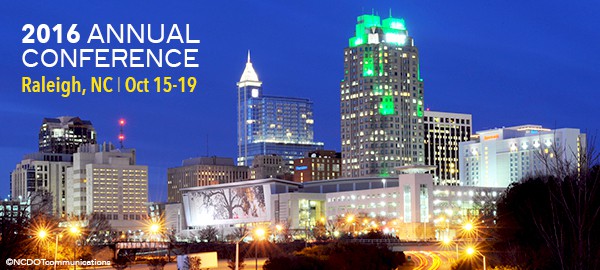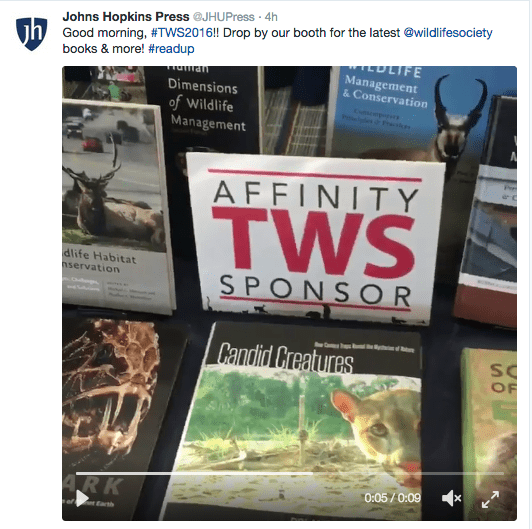Share this article
TWS is Live from Raleigh, NC!
Live from Raleigh on WEDNESDAY, October 19, 2016
Handling Microagressions in the Workplace
“We often let these feelings slide if they were caused by someone in a higher position, as a way to deal with our feelings,” said Mary Wyer, from the Department of Education at NC State University, and one of the panel speakers.
“I thought microagression is just people being stupid,” said David Buggs, chief diversity and inclusion officer for Texas Parks & Wildlife.
“For example, when there is one woman in a meeting, the men will often ask her to take the notes. Don’t be fooled, this type of message can be purposeful. Everybody practices microagression, and we need to be self aware so that everyone in the workplace feels valued and included.”
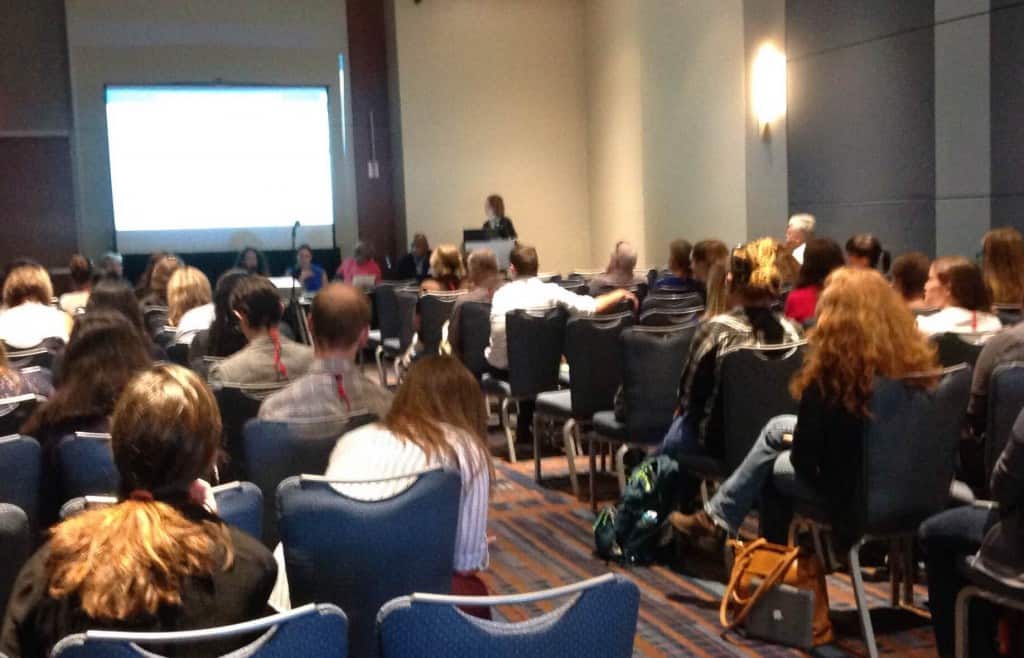
[03:45 p.m.]
Carnivores: A New Paradigm in Conservation, Management and Coexistence Strategies symposium session
When you mess with a dingo, what happens? This was the topic of Arian Wallach of the University of Sydney’s research “Transitioning to a Predator Friendly Future in Australia” that she shared at a contributed papers session. In the last 200 years in Australia, there has been an extinction of 28 mammals, Wallach says. Much of this is due to feral cats and foxes. But as part of Wallach’s research on dingoes, “where you get more dingoes, you get a higher persistence of marsupials.” Wallach says dingoes have a similar ecological role as species like wolves in Yellowstone.
[03:30 p.m.]
Sam Koltinsky, owner and documentary film producer of “America’s Darling,” a film about the life of Jay N. “Ding” Darling, is at his booth featuring Darling’s artwork as well as some of his belongings including his hat that he’s holding in the photo. The film, being shown in Ballroom A, depicts Darling’s life as an American cartoonist and conservationist.
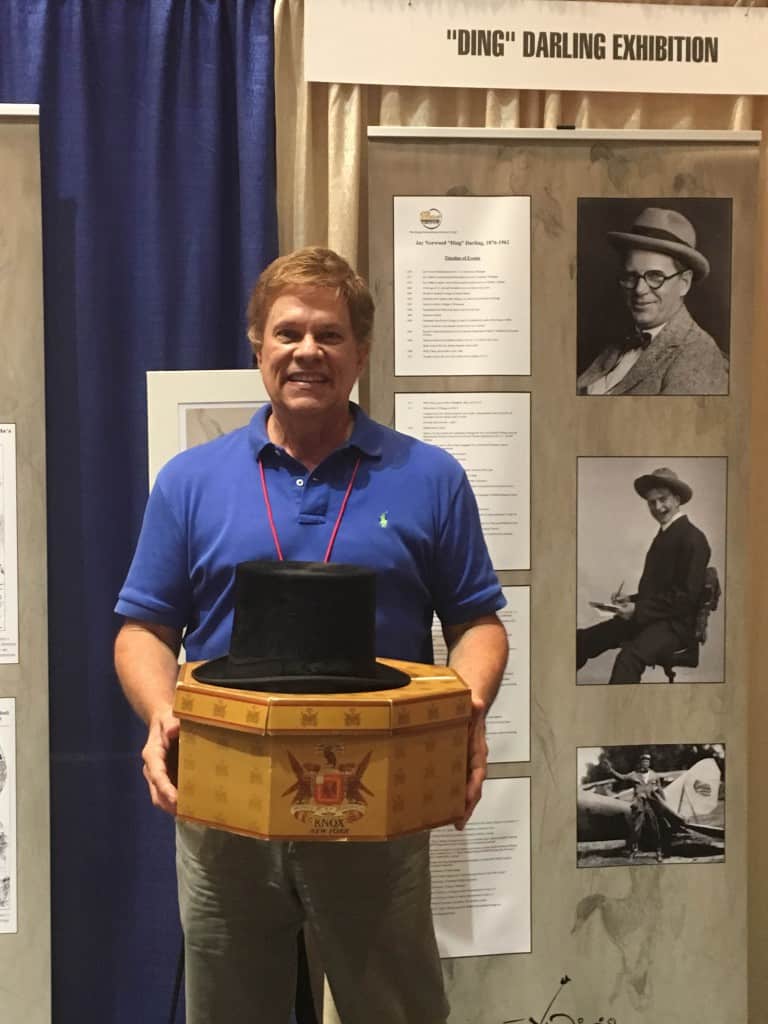
[02:00 p.m.]
President Bruce Thompson has opened the TWS Council meeting in Room 402, where a group of members has gathered to learn more about the Society. Outgoing and incoming Council members are being recognized, including Darren Miller who was recently elected and now is taking his place on Council as TWS Vice President. “It’s an honor and a privilege to serve this Society,” said Miller.
“Many types of cultures intersect in wildlife conservation. We need to be aware of those cultural influences in how we communicate,” said TWS President Bruce Thompson.
The meeting is open to all members and is scheduled to end at 12:00 p.m..
[10:45 a.m.]
Keynote: Public-Private Partnerships for Conservation
Terry Mansfield, the operator of a sheep and cattle ranch near Cheney, WA., is a landowner who has a master’s degree in wildlife ecology. In his talk, he provided the perspective of both an academic and a landowner. Landowners are willing to take into account conservation as long as they have that solid science, he says.
“You’ve got to have that win on the other side of the equation for landowners,” he said.
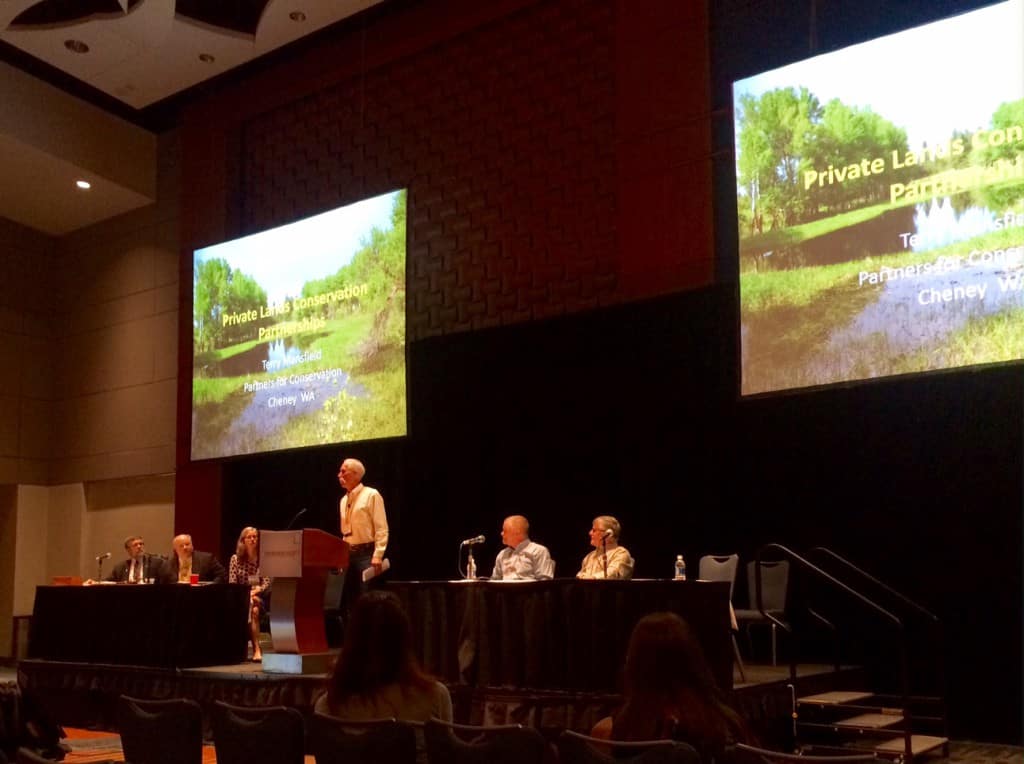
[10:00 a.m.]
David “Lefty” Durando owner operator of Durando Ranchers in Wauchula, Fl. says with all of the different wildlife in Florida, “our biggest problem is people.” Lefty says most landowners in Florida don’t trust the government, but through Erin Myers, a partners biologist with U.S. Fish and Wildlife Service, he developed a partnership in order to deal with invasive species.
“When you become a landowner, your first thought has to be this is so great. I’ve got this land. How do we keep it? How do we give it to our children?”
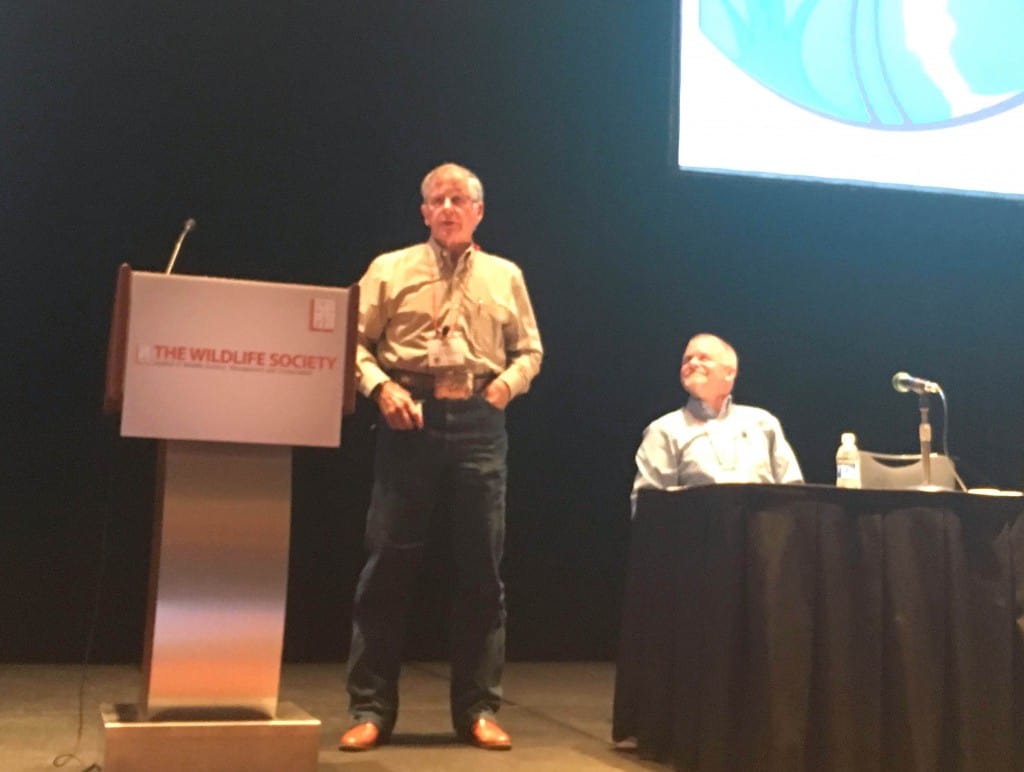
[09:45 a.m.]
Jim Stone, the chairman of Partners for Conservation and a third generation cattle rancher from Ovando, Montana said right when he got out of school his father “handed him the keys” for his ranch.
“I didn’t understand the complexity of this natural resource I was given,” he said.
He says years later because of partnerships, he’s finally figuring out that healthy riparian zones, healthy grass and healthy timber comes from healthy watersheds. Stone is involved in the “Blackfoot Challenge” which is a local watershed organization.
[09:30 a.m.]
John Ann Shearer, the local arrangements committee chair, representing the Partners for Fish and Wildlife Program says that private partnerships are important. “We simply have to have private lands to sustain our wildlife population,” she said, adding that wildlife don’t know boundaries.
[09:10 a.m.]
New TWS President Bruce Thompson says enhancing partnerships is, “an incredible success story we’re seeing in the making for this year’s conference.” He says next year’s conference theme will be: Wildlife conservation is a crossroads of cultures.
[09:00 a.m.]
TWS President Gary Potts introduced the Public-Private Partnerships for Conservation keynote address.
“I am so proud this year of expanding the partnerships,” he said. “It’s a “we” thing.” Potts says, “However we choose to serve The Wildlife Society, we all bring something to the table.”
Potts ended with his motto throughout his presidency: WE ARE THE WILDLIFE SOCIETY! Potts then passed the president’s gavel to incoming president Bruce Thompson.
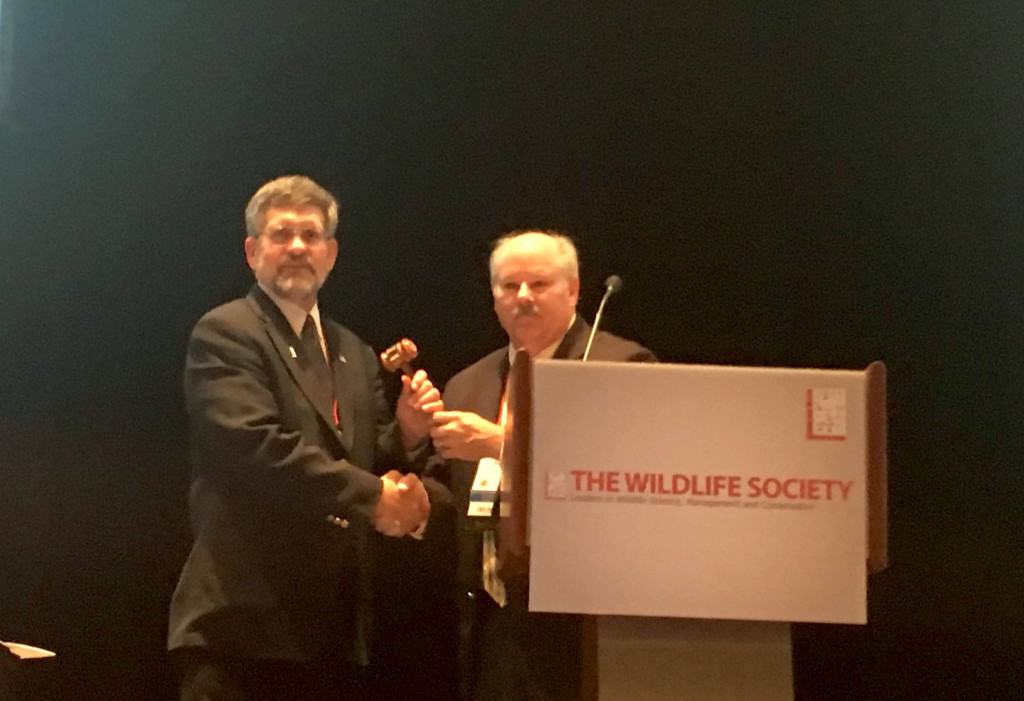
[08:30 a.m.]
Live from Raleigh on TUESDAY, October 18, 2016
We’re jamming to the song “Angel from Montgomery” at the North Carolina jam session! Wildlifers are winding down and playing guitars, harmonicas, tambourines and more.
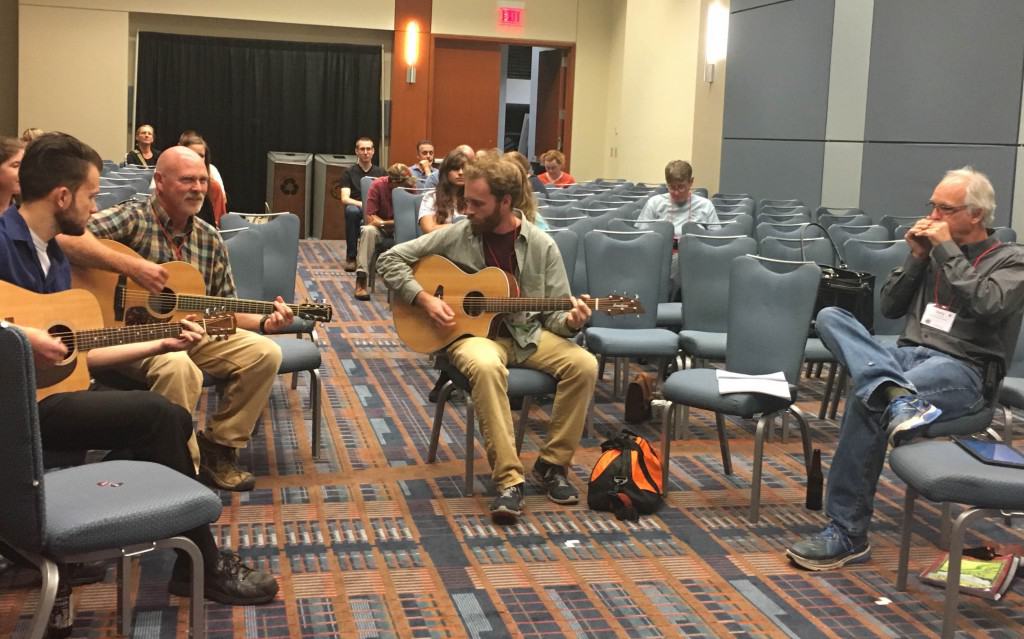
[08:50 p.m.]
Congratulations to the University of Georgia who won the quiz bowl championship with a score of 130-50 against North Carolina State University!
[06:50 p.m.]
Quiz Bowl: Championship Round is under way! Abraham Baldwin and Purdue University begin the competition to see which university has the most wildlife knowledge.
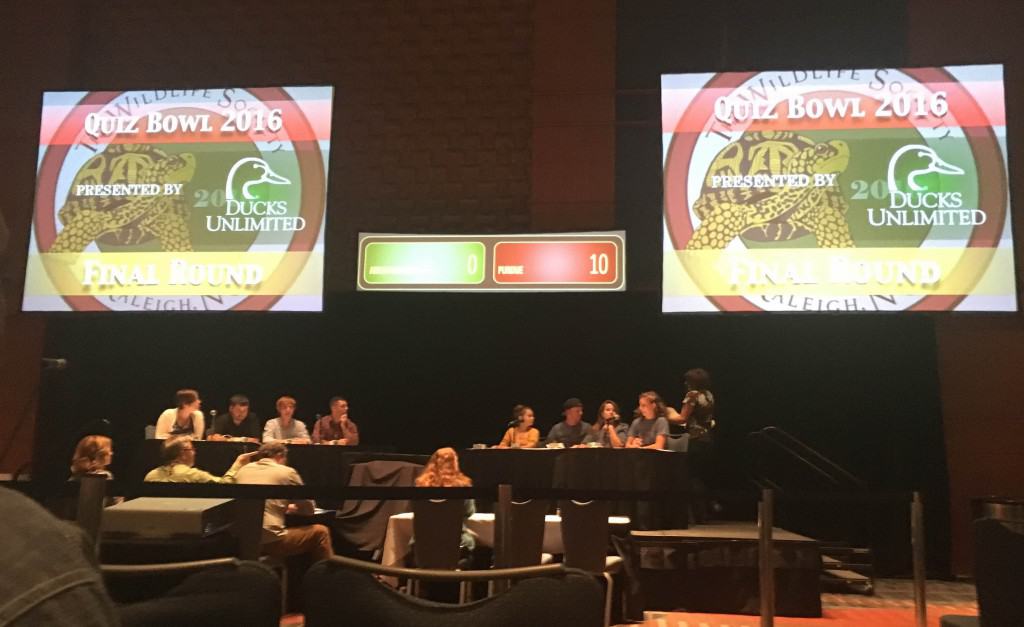
[06:00 p.m.]
Student Research in Progress poster session
Every wildlife biologist knows that male elk range farther than females. But when managers reintroduced elk (Cervus elaphus) to Wisconsin, it was the females who immediately spread out, while the males remained in small home ranges near the release site, according to preliminary data from the animals’ tracking collars. The male elk may have stayed near the release site so they could take advantage of a food plot managers had planted for them, says Travis Bryan, a master’s student at the University of Wisconsin who presented the findings in a poster on Tuesday.
“Because they were released about a month and a half, two months before their breeding season, they were trying to bulk up and put on mass on their antlers,” Bryan said. “I think they were really focused on that high-quality forage.”
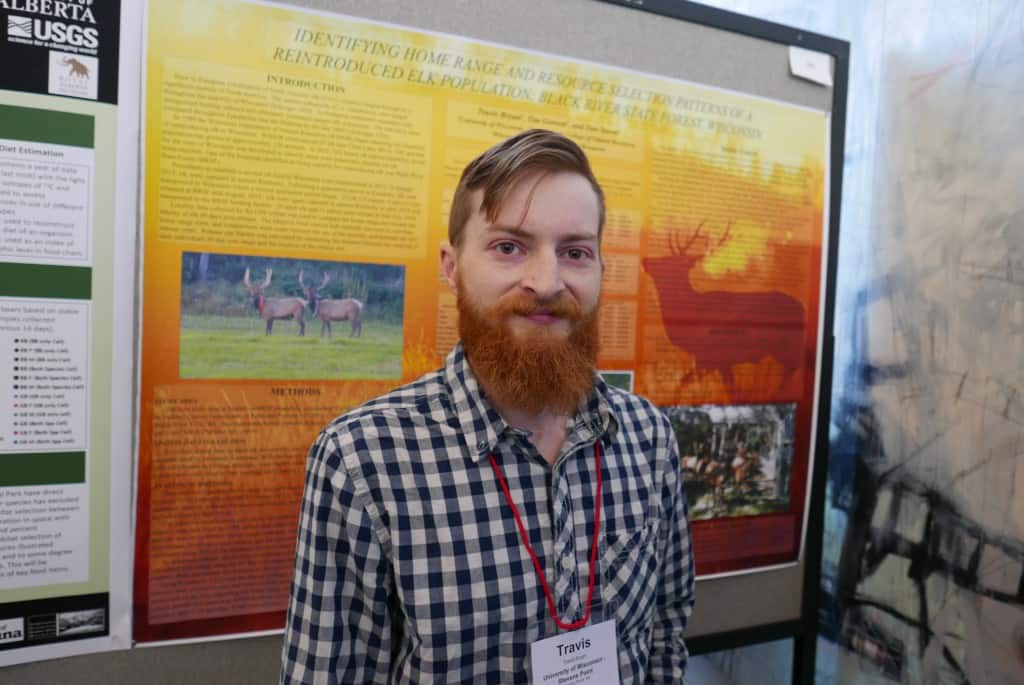
[06:00 p.m.]
Wild predators carry the influence of humans — literally. In human-dense areas near Boulder, Colo., camera traps documented many predators carrying human-associated prey species such as raccoons and domestic cats. Some predators also carried non-prey items, such as dog biscuits and bags of dog poop. Small predator species tended to carry more objects than large species, and red foxes carried the most of all. Rebecca Much, an undergraduate at Colorado State University, presented the findings on Tuesday in a poster at the TWS annual conference.
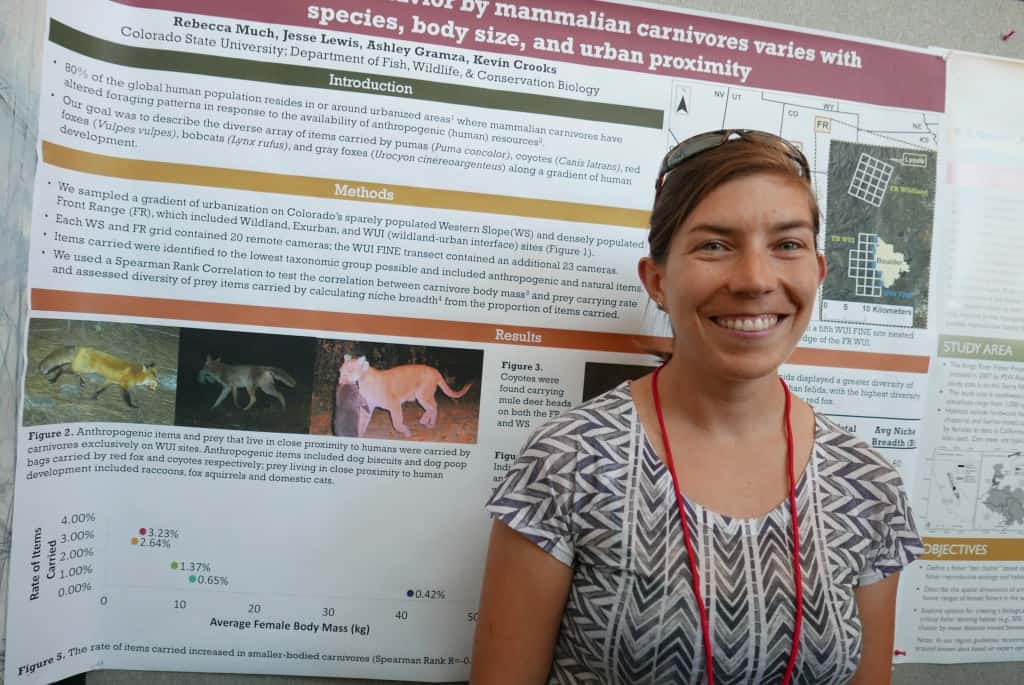
[05:45 p.m.]
Students are presenting their posters to people walking by Ballrooms A, B and C. Undergraduate students at Clemson University Kaylynn Hippler, Caroline Hitchner and Katie Adkins–who call themselves the squirrel ladies on the campus–studied if there were toxic levels of zinc from oral contraceptives in eastern gray squirrels. The team found that the high levels of zinc where actually coming from the environment, likely because one of the sites they were looking at was a dump site. Toxic levels of zinc cause the squirrels to become lethargic, anemic and have other consequences as well.
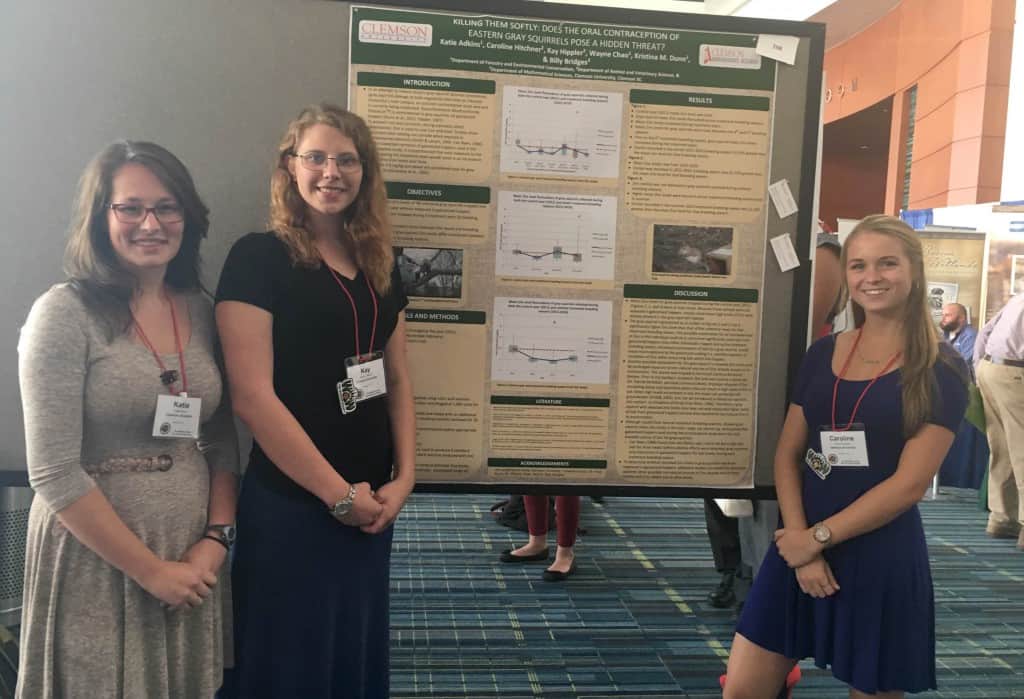
[05:20 p.m.]
For a tortoise weighing more than 200 pounds, the Galápagos lowlands are the place to be during the cooler dry season. But in the hot rainy season, the lowlands don’t produce enough food to maintain a large tortoise’s body. That’s why some Galápagos tortoises — mostly older males — migrate up and down volcanoes every year, according to biologist Stephen Blake. The smaller females tend to stay in the lowlands, where they have access to better nesting grounds.
“Tortoises follow vegetation productivity,” said Blake in a talk at the TWS annual conference on Tuesday. “It really pays to be a migrater if you’re a large tortoise.”
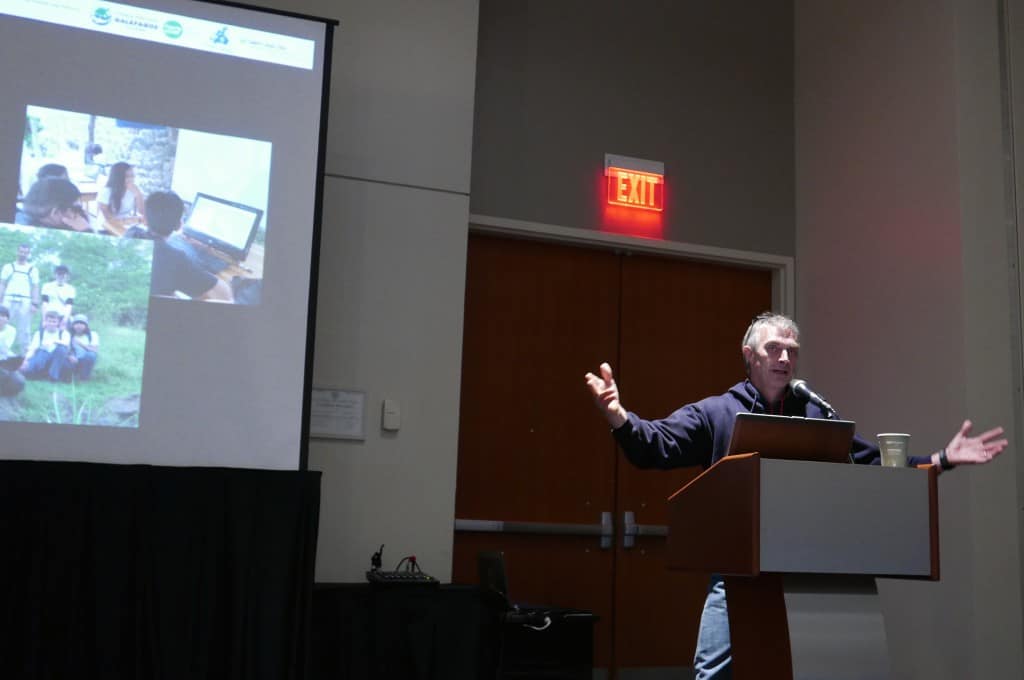
[04:40 p.m.]
Connecting across the globe during this year’s conference.
Keep the tweets coming! #TWS2016
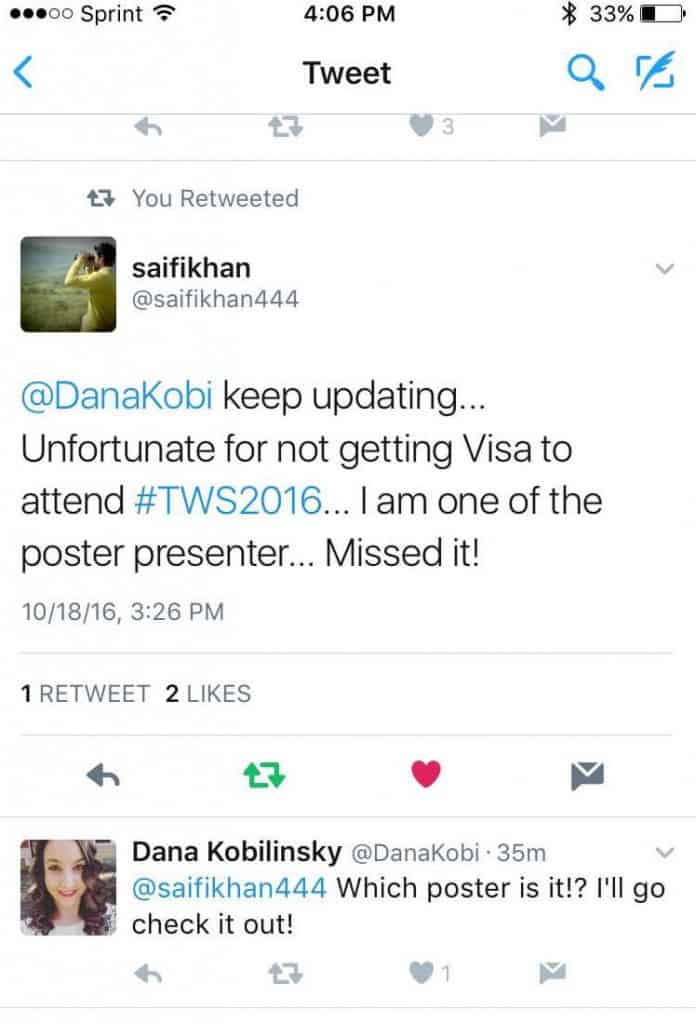
NRCS Working Lands for Wildlife: Documenting Response symposium session
As part of the Working Lands for Wildlife session, Kristen Johnson of Indiana University of Pennsylvania spoke about her research on the American woodcock. Johnson says habitat loss is the driving factor driving many target species to the brink. As part of her research, she determined we’ve lost much of the early successional forest which is the habitat for many of these species. The goal of her research was to determine how woodcock are responding in landscapes managed for species such as the golden-winged warbler.
[03:20 p.m.]
Conservation and Ecology of Mammals II contributed papers session
Dine and Dash: The Effect of Apex Predators on Cheetah Handling Time
Meal time is a long process for mother cheetahs. In addition to training their cubs to hunt and feed, the big cats must keep a lookout for cub-killing predators, says Anne Hilborn of Virginia Tech. Male and juvenile cheetahs, in contrast, use a “dine and dash” strategy.
“Young cheetahs are really really bad at hunting,” she said. “I’ve watched cubs take up to half an hour chasing, catching, and failing to kill gazelle fawns. And so this adds a lot of time to the amount of time spent handling small prey.”
[03:00 p.m.]
Students gain an inside look at Wildlife Services careers
Tuesday at TWS’ 23rd Annual Conference, students gained an inside look at career opportunities with Wildlife Services at the U.S. Department of Agriculture. Biologist Steve Kendrot led the discussion, explaining the agency’s structure and the crucial role it plays in minimizing human-wildlife conflict.
“Our vision is to improve the coexistence of human and wildlife,” said Kendrot. “It’s very problem-solving oriented.”
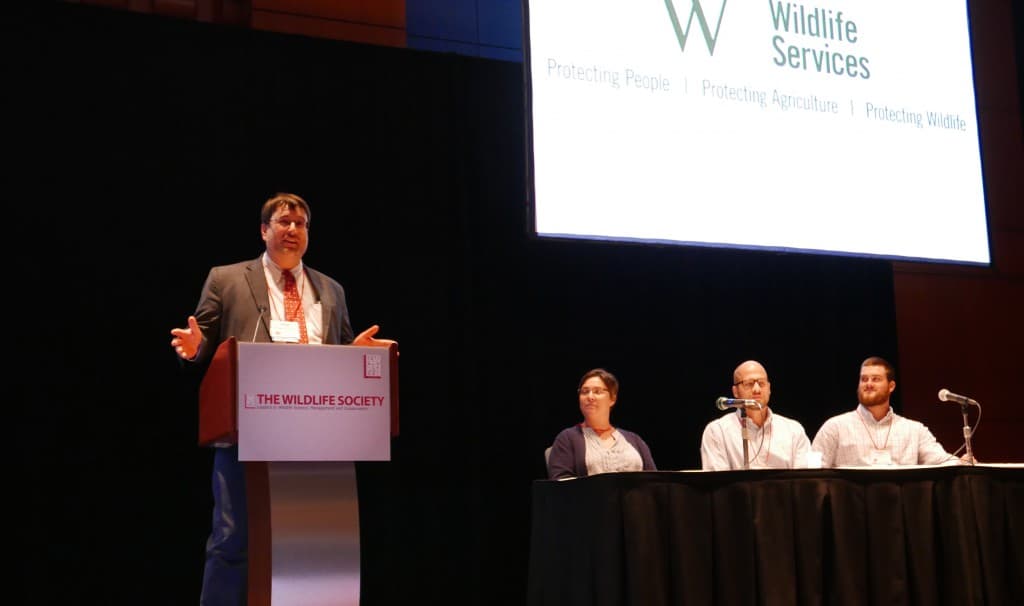
[02:00 p.m.]
Career Opportunities Panel Discussion
Scott Fletcher, the natural resource manager with Duke Energy, says good communication skills is crucial in the wildlife field. This includes verbal skills, technical writing and more. Fletcher says in order to stand out on their resumes, students should mention different things they did that demonstrate they are team players.
“Even if you take a mission trip to Guatemala, include that so we can see those extracurricular activities and how you interact with other people and communicate,” he said.
[11:30 a.m.]
Stephen Petron with engineering consulting company CH2M says it’s important to have mentors not only at the beginning of your career but throughout your career. He also says it’s important to have “north stars,” or people you don’t know personally but appreciate how they communicate and make decisions.
[11:20 a.m.]
Rosa Gonzalez with Wildlife Services says she started school later than most other people at 34 years old. She wasn’t aware of the career options that were out there and she originally wanted to become a park ranger. Gonzalez says students should pay attention to internship opportunities.
“School teaches you the basics, but internships are going to take you all the way,” she said. “Apply for those internships.”
[11:00 a.m.]
Scott Yaich, the chief biologist with Ducks Unlimited, says luck will play an important role in your careers. But, he also says this luck will lead to you having to take on additional work to show what you can do and what you know. Yaich also says networking is important for students.
“Network, network, network,” he said. “Who you know is rarely going to get you a job. But who you know can make you aware that an opportunity is available.”
[11:10 a.m.]
The first speaker at the panel discussion on career opportunities, Brian Logan with the U.S. Forest Service says learning how to write up to a 10th grade reading level is important in the wildlife profession. He says wildlifers will need to learn how to write for different audiences including magazine writing, journal writing and writing for a general audience. Logan also provided other advice for students.
“If I have any advice for you as students evaluating where you want to go for your career, it’s stay involved.” he said.
[10:55 a.m.]
Tuesday Plenary: Is Sustainable Wildlife Use Sustainable?
Wrapping up the today’s sustainable use plenary session with Shane Mahoney. He started off with a reflection on the reaction to the killing of Cecil, the African lion.
“There will be more Cecil events,” Mahoney said. “First, and most important, it’s critical to recognize that societal views are changing. And second, we need to recognize the implications of those changes.”
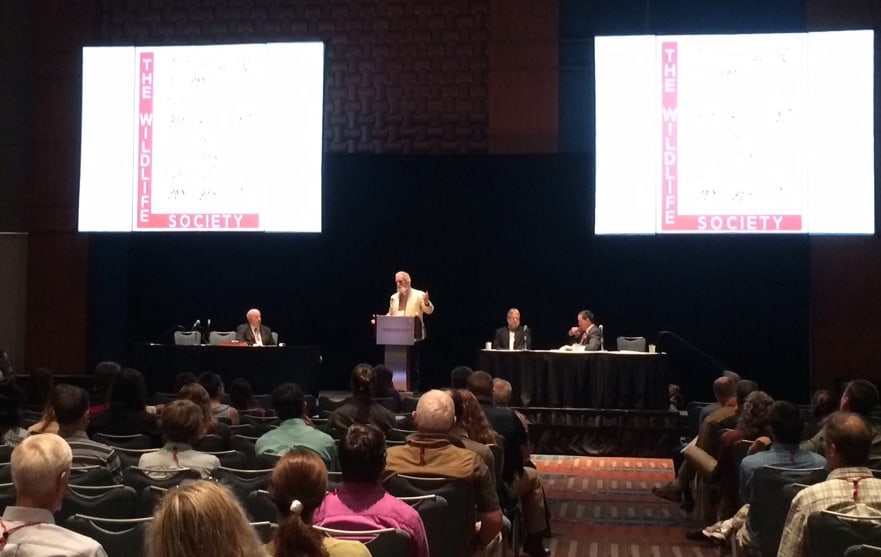
[09:50 a.m.]
This morning’s plenary speaker, John McDonald, TWS Vice President, says yes we can hunt bears sustainably but we haven’t answered the bigger question about do we need to hunt them.
“This is the question we are being asked by society,” he said.
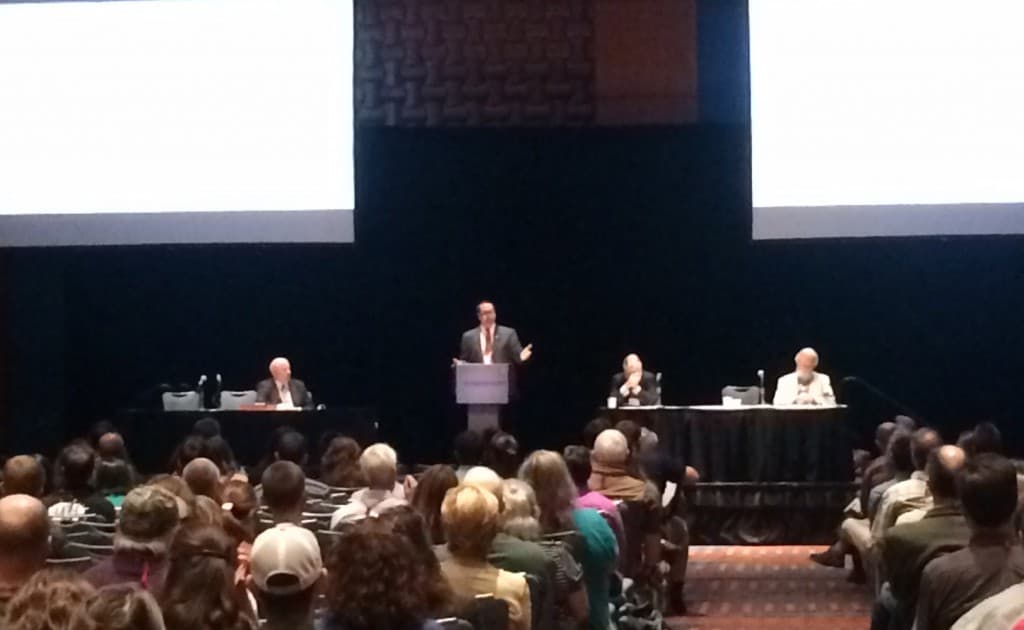
[09:30 a.m.]
Shawn Riley from Michigan State University, one of today’s plenary speakers told the audience,
“Tension over sustainable use has been discussed in The Wildlife Society for a long time.”
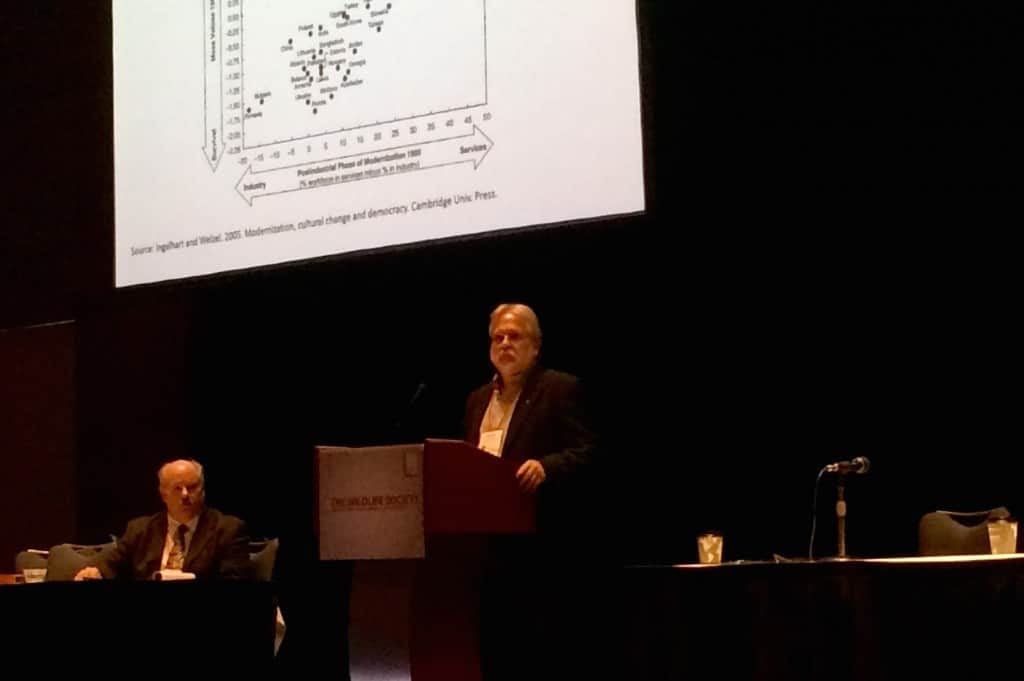
[09:00 a.m.]
Don’t miss the Quiz Bowl: Championship Round tonight from 6-7 p.m.
Last night 25 teams squared off during our 2016 Quiz Bowl: Round One for the championship. Don’t miss the battle for this year’s title between North Carolina State University and University of Georgia.
[08:50 a.m.]
Premier Partner Caterpillar speaks to Sustainability
At the beginning of today’s plenary, Ken Hoefling of Caterpillar, described how the equipment manufactured by the company is used in many habitat restoration projects.
“We are here with you,” said Hoefling. “Most people know Caterpillar for human development, but our equipment plays a major role in habitat restoration.”
Caterpillar is one of the sponsors of the today’s plenary. Hoefling showed a video that highlighted some of the restoration projects involving the company’s heavy-duty, dirt-moving vehicles.
[08:40 a.m.]
Live from Raleigh on MONDAY, October 17, 2016
Tonight we celebrate women in the wildlife profession at the Women in Wildlife (WOW) Networking Event. What a great turnout!
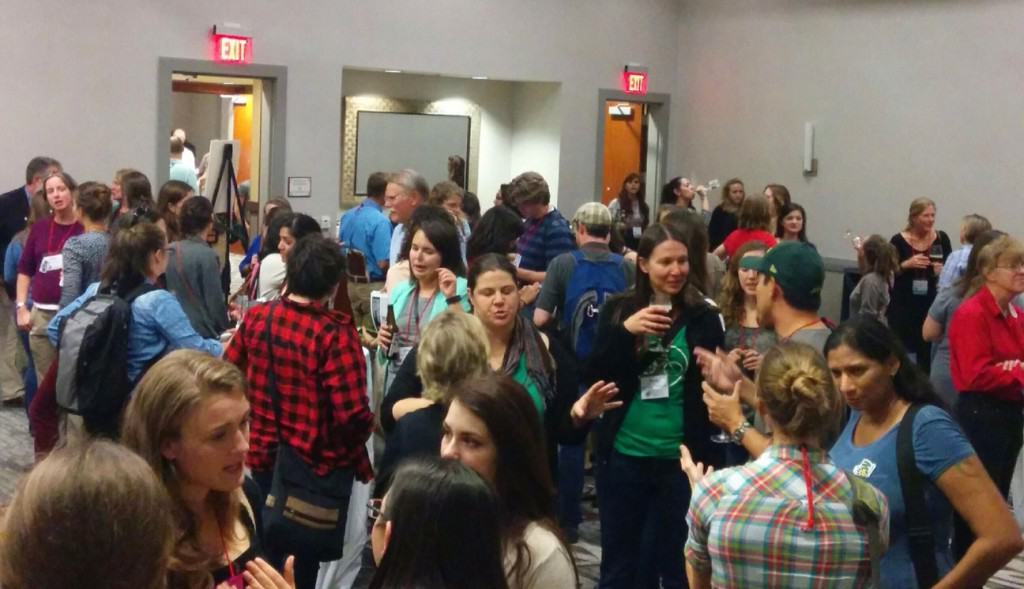
[08:45 p.m.]
TWS conference attendees are honoring new Aldo Leopoldo winner Dale Dale McCullough at the Aldo Leopold reception.
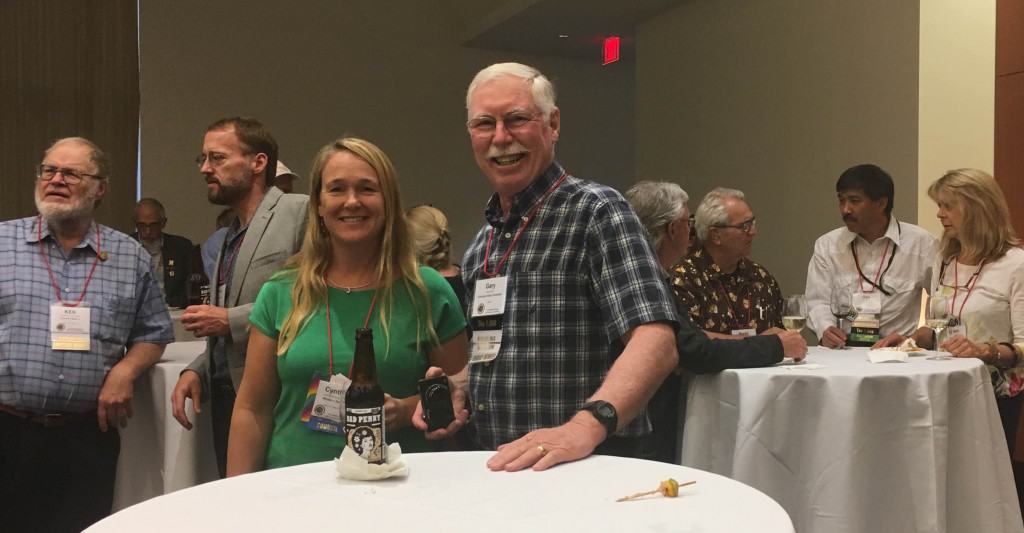
[06:30 p.m.]
Women and Minorities in Wildlife Science symposium
At a diversity symposium, Mamie Parker with the U.S. Fish and Wildlife Service, spoke about how she became one of the first African American women working with the agency. She says she was lucky enough to have white men that were mentors to her. “It’s a divided world,” she said, but we all have the same views on natural resources and wildlife. “In the future, we can’t look at a room like this and not have more people of color helping us with things like invasive species,” she said.
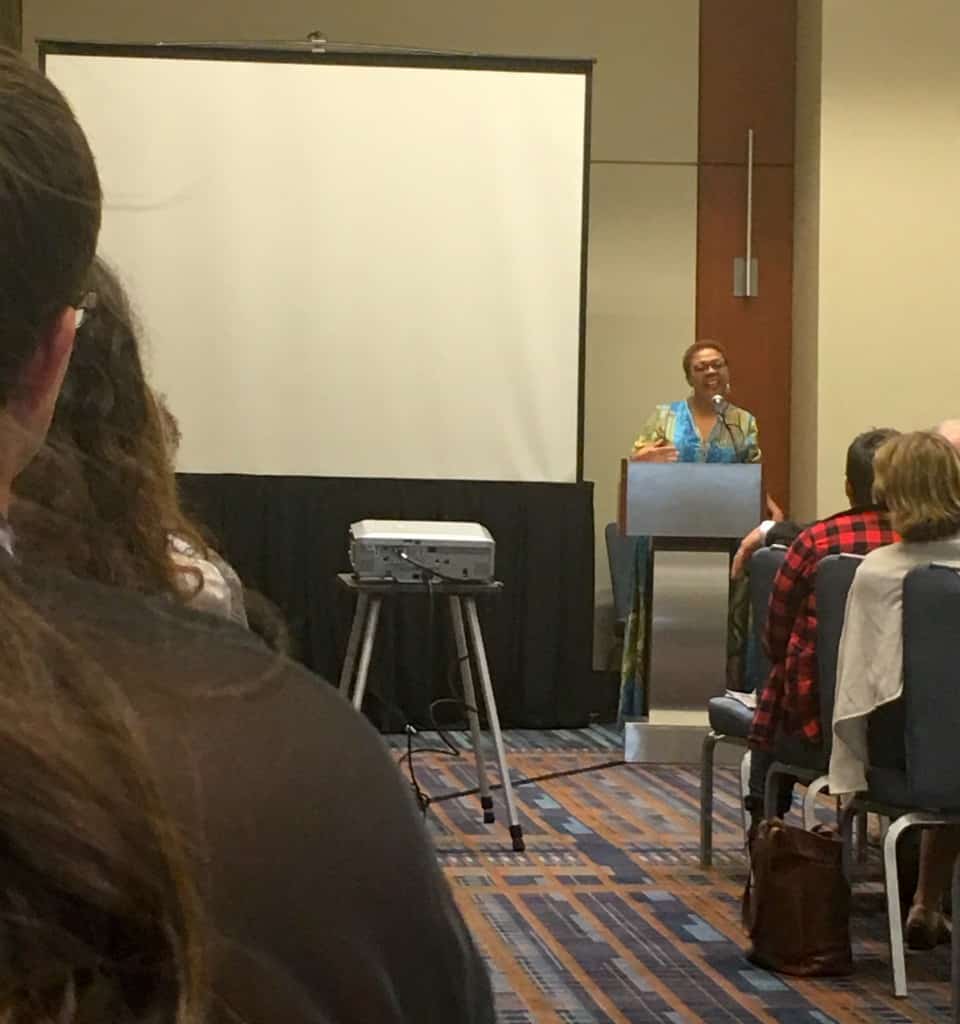
[02:50 p.m.]
Associate Editors briefed on TWS journal initiatives
At a luncheon on Monday hosted by Wiley, the editors-in-chief of TWS journals, nearly 20 associate editors and members of the TWS Publications Subcommittee heard presentations on tools for complying with funder mandates for open-access publishing and the drive for publicly accessible data.
Fiona Sarne, Wiley senior editor, presented an overview of how Wiley manuscript submission system makes it easy for authors to comply with any funder mandate. “Wiley also provides a wealth of information along with tools to help authors figure out if their funders, institutions, or journals have mandates under which they need to comply, giving authors options in order to meet these requirements.” Wiley publishes TWS’ journals.
Paul Krausman and David Haukos, editors-in-chief of The Journal of Wildlife Management and the Wildlife Society Bulletin, respectively, also congratulated the first recipient of the W. L. McAtee and G. V. Burger Award for Outstanding Service as an Associate Editor of a TWS Scientific Journal, Roger Applegate. The award was created to recognize an outstanding associate editor of TWS publications. The award is named for Atee and Burger, who were the first editors of the journal and bulletin, respectively.
The meeting closed with a special tribute to Eric Hellgren who has served as editor-in-chief of Wildlife Monographs since September 2007, overseeing publication of 25 monographs on topics ranging from sandhill cranes, mule deer and black bears. Hellgren announced he is stepping down earlier this year and a search for his replacement is currently underway.
Eric Hellgren, editor-in-chief of TWS’ Wildlife Monographs, will step down in February 2017 after 10 years in that role.
During his tenure, Eric will have overseen the publication of 25 monographs (24 published and 1 in the works), on a diverse range of species, including sandhill cranes, black bears, and mule deer.
[02:00 p.m.]
Climate Change and Migratory Birds: Connecting Management Challenges to Research Programs
Bridging the gap between science and society is important especially in migratory bird conservation. Madeleine Rubinstein, a biologist and presidential management fellow with the National Climate Change and Wildlife Science Center, started off a Contributed Paper symposium discussing this as well as other aspects of management decision making for the birds. Rubinstein says uncertainty is an important aspect of decision making, and climate change is one uncertainty that needs to be taken into account.
[01:40 p.m.]
Contributed Poster Session
Mason Seiges’ poster at the poster session covers how hurricane Sandy affected wildlife as well as human infrastructure in New Jersey. As part of his project, he looked at how to prepare for the next storm “because it is going to come,” he says. Money from Congress will help make marshes more resilient to sea level rise, he says.
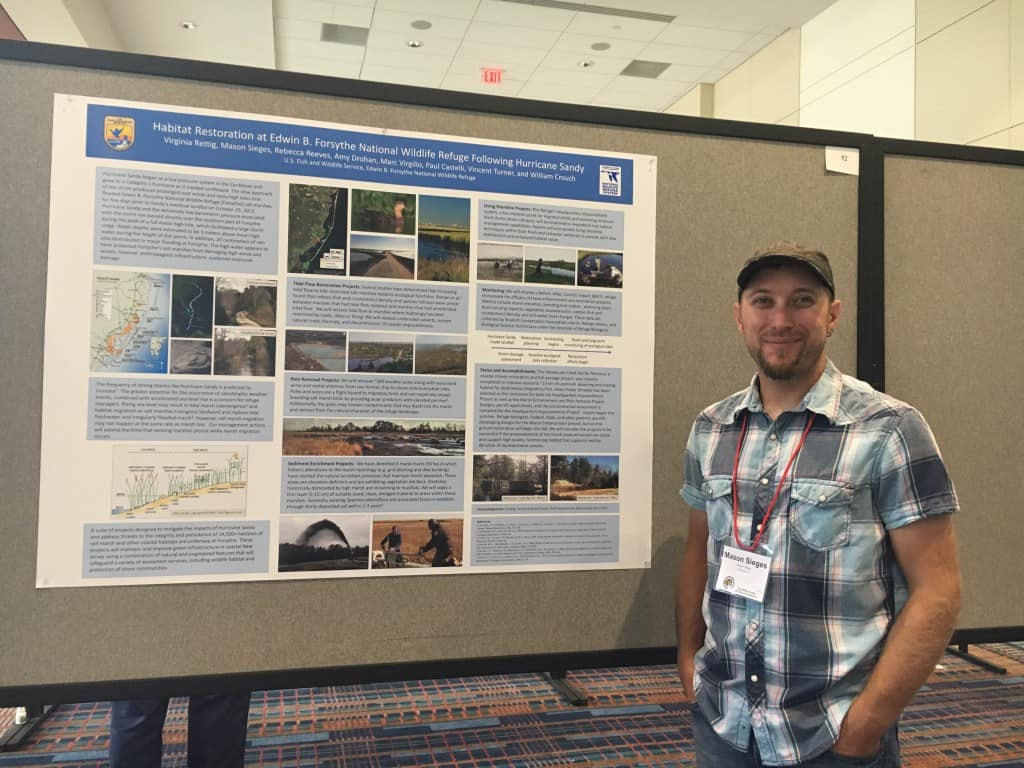
[11:20 a.m.]
Hearing some great career advice in Careers with U.S. Forest Service!
The Forest Service is all about science-based management.
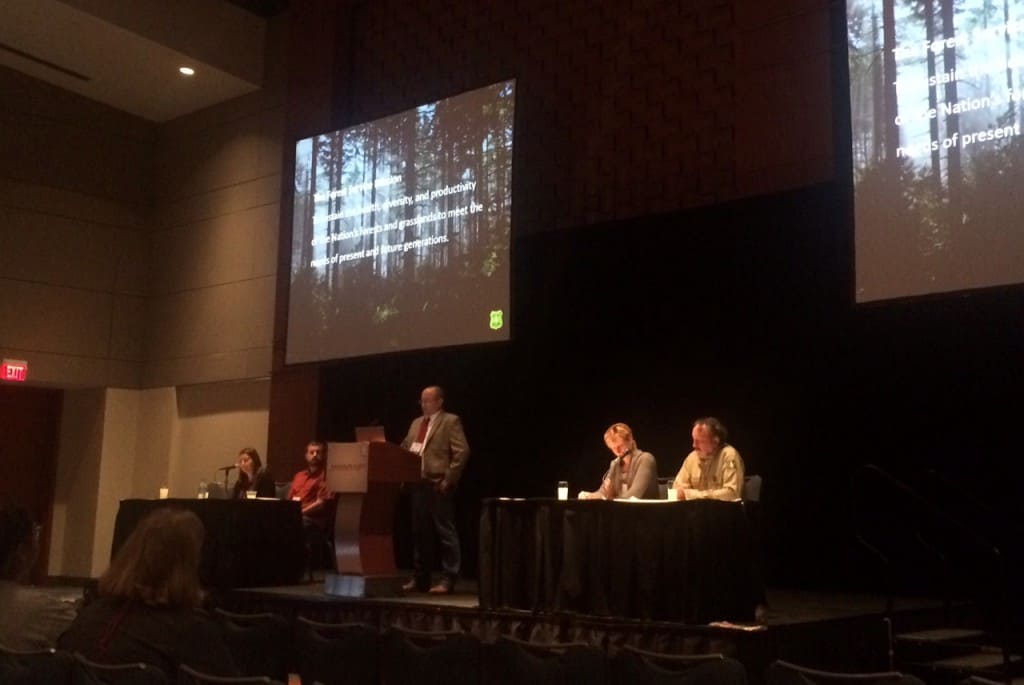
[11:00 a.m.]
Monday Plenary: The Past, the Present and the Future of Invasive Species Control in North America: Achieving Success Through Innovation
Erin Meyers, the USFWS Partners for Fish and Wildlife Program Biologist in South Florida, says, “partnerships is a buzz word,” and they can actually help reduce costs on your agency. Meyers discussed resources such as the Early Detection and Distribution Mapping System where people an take a picture of a possible invasive species that then becomes verified and put on the maps so others can determine if the species is moving further out of its current range.
“We encourage the development and implementation of new innovative approaches,” she said.
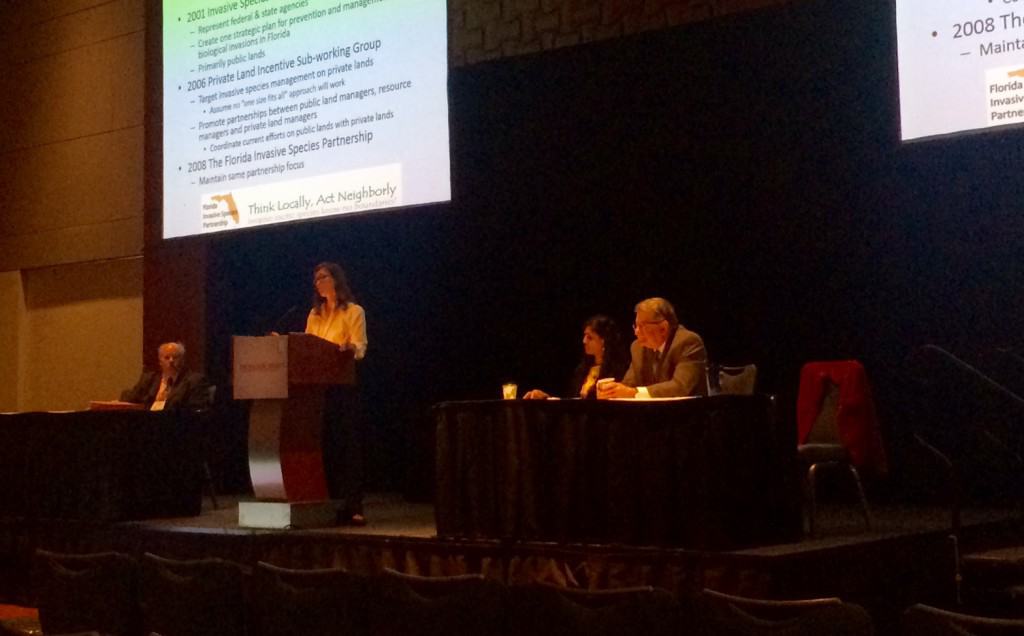
[10:00 a.m.]
Larry Clark, the director of the USDA’s National Wildlife Research Center deals with injurious animals and how some wildlife impacts human endeavors. Clark says invasive species such as rodents cause large amounts of damage in the U.S. For example, 25 percent of the world’s rice is contaminated by rodents, he says. But, all is not lost in regards to stopping invasive species from spreading, he says. For example, the NWRC has worked to suppress brown tree snake populations in Guam.
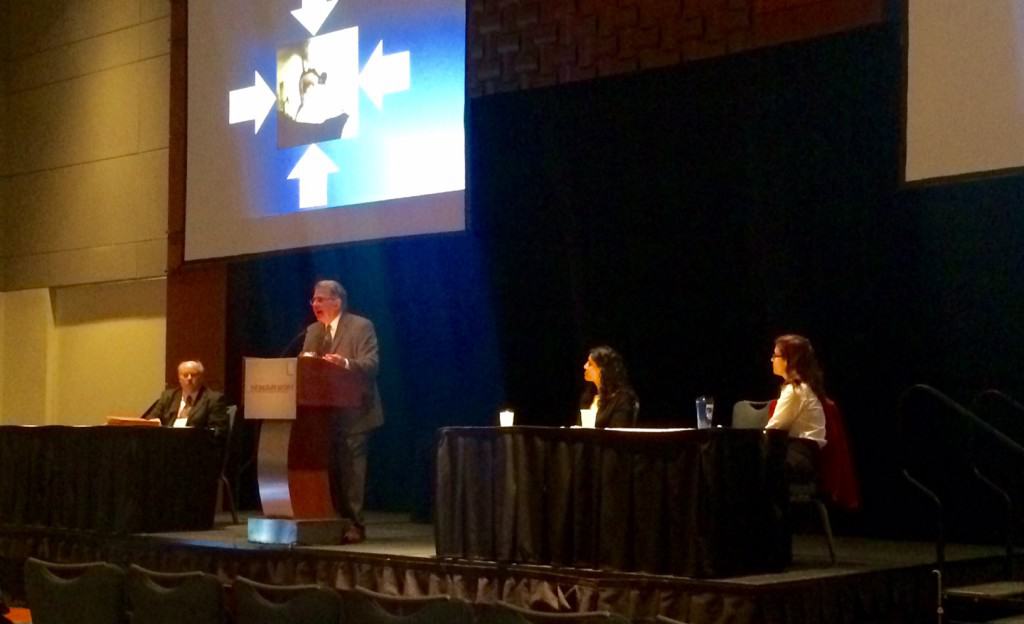
[09:30 a.m.]
Priya Nanjappa, who leads the amphibian and reptile conservation program and policy efforts for the Association of Fish & Wildlife Agencies is kicking off the Invasive Species plenary this morning. Nanjappa says invasive species is a “complex, multifaceted issue.” She’s giving some great background on the history of the Lacy Act and the National Invasive Species Act of 1996 that helps prevent more invasive species from moving into the U.S. But what do we do about the invasive species that are already here? Nanjappa says AFWA is doing a few things such as creating a document to help prevent the spread of aquatic invasive species by recreational boats.
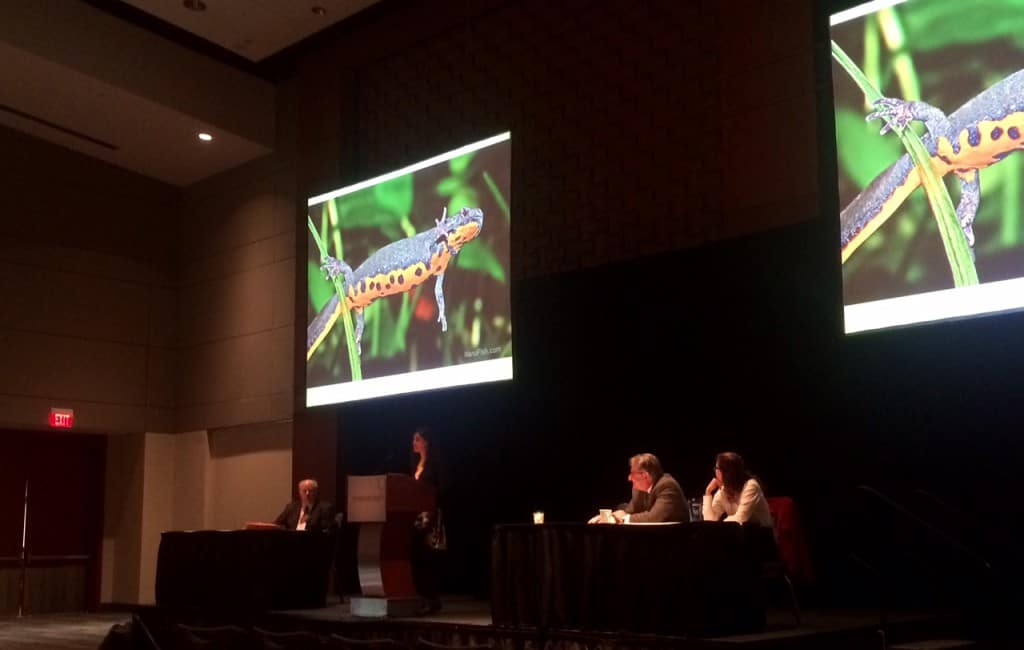
[09:00 a.m.]
Live from Raleigh on SUNDAY, October 16, 2016
Partnerships Across the Spectrum of Wildlife Governance symposium
The panel at the Partnership Symposium is answering great questions about how to develop partnerships. They’re covering how to have partners that don’t get along with one another, how to give up your own power for the greater good and more.
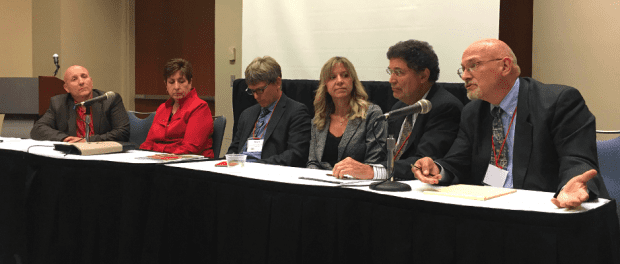
[05:00 p.m.]
TWS Past Presidents convene in Raleigh
Having lunch with 10 of the 28 living Past Presidents of The Wildlife Society is quite an awesome experience. These individuals represent some of the most influential leaders in wildlife stewardship.
“We are honored to have this group of our past leaders here today at the start of TWS’ 23rd Annual Conference,” said President Gary Potts. “And we also want to salute those who were unable to attend.”
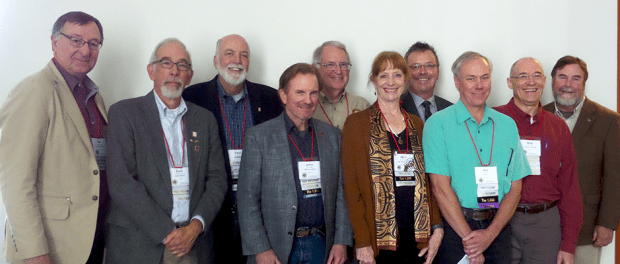
From the left: Daniel Svedarsky, Dick Lancia, Paul Krausman, John Organ, Robert Brown, Winifred Kessler, Rick Baydack, Jon Haufler, Robert Warren, Thomas Franklin
[01:30 p.m.]
Be sure you visit our partner booths outside of Ballroom A.
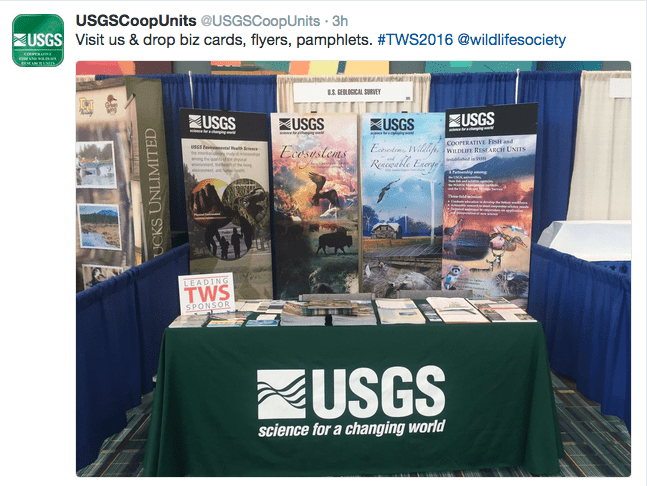
Annual Members Meeting
Executive Director Ken Williams and President Potts caught conference attendees up on the current state of The Wildlife Society, starting with some of the success of this conference so far. At this year’s conference, an attendance of about 1,850 wildlifers will have the opportunity to take advantage of 900 educational opportunities and four plenaries and key note sessions. Williams also discussed the success of TWS in regards to their finances, publications, partnerships and more.
“I am pleased to report to you today we have made and are making major strides in every one of those areas,” Williams said. “The future looks very bright for the society.”
[12:30 p.m.]
What would pioneer conservationist Aldo Leopold think about the wildlife profession today?
Last year’s Aldo Leopold winner and keynote speaker Jim Nichols tried to answer this question in his talk “The Evolution of the Wildlife Profession: The Times They are A-Changin’.” He says Leopold would be impressed by the development of methods in the field, but he might think there could be improvement in decision making. Also at this event, Dale R. McCullough was presented with the 2016 Aldo Leopold Memorial Award.
[11:35 a.m.]
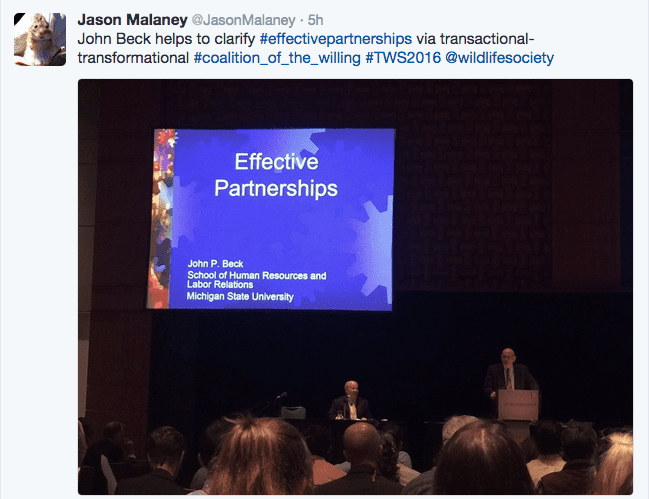
John Beck, an associate professor in the School of Human Resources and Labor Relations at Michigan State University delves into what types of partnerships are needed in the wildlife profession. He says our partners must have the same core values and needs we want to be met. We need to ask better, deeper questions, he says.
We are not simply going to get people working in partnership to accept all of the answers we’ve already formulated.
We need to struggle with one another to move it forward.
[10:00 a.m.]
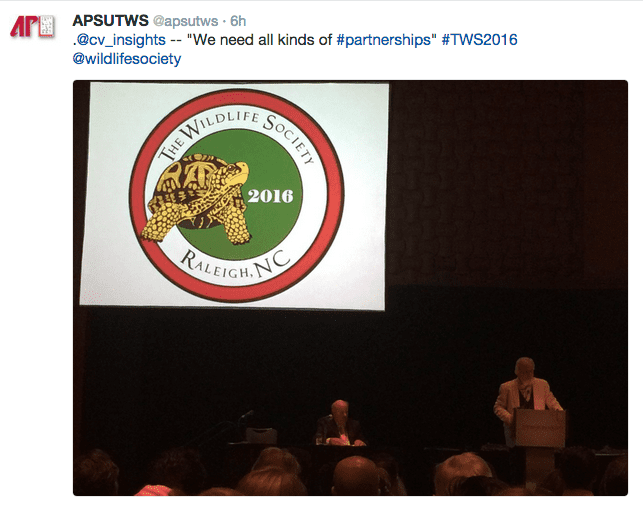
Shane Mahoney is captivating the room on the importance of partnerships at our first plenary.
Our profession now is more important than it’s ever been.
And the only way to tackle conservation of wildlife — not only the big African Species that are in the news — but those throughout the world, can only be done by having partnerships.
[09:40 a.m.]
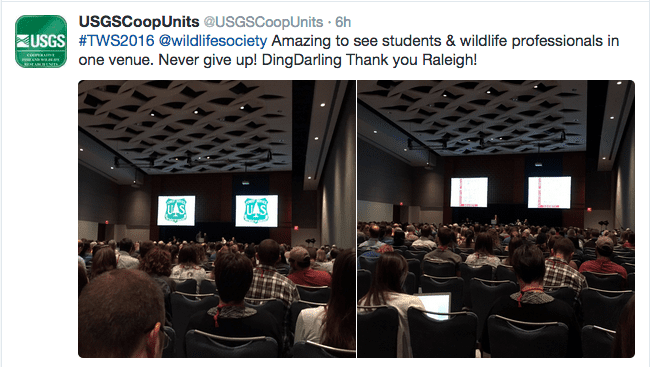
We are kicking off our 23rd Annual Conference in Raleigh, North Carolina, with an inspiring opening plenary, Partnerships Across the Spectrum of Wildlife Governance, with an incredible speaker lineup – Shane Mahoney, President & CEO, Conservation Visions, Inc. and John Beck, Associate Professor, School of Human Resources & Labor Relations, Michigan State University.
We are thankful for their support for our Society and the wildlife profession. Learn more about this session here.
[09:20 a.m.]



